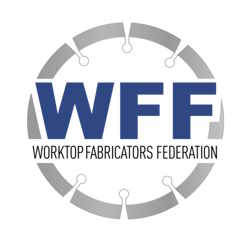Speculation about health risks associated with some engineered stone
There has been much talk in the KBB industry recently about potential links between some solid surface materials and diseases such as lung cancer, COPD and Silicocis. The Australian government took the step of banning the sale of some high silica products from July 2024. These illnesses have been linked to stonemasons and thus the KBB association is with fabricators of solid surface materials.
What is engineered stone?
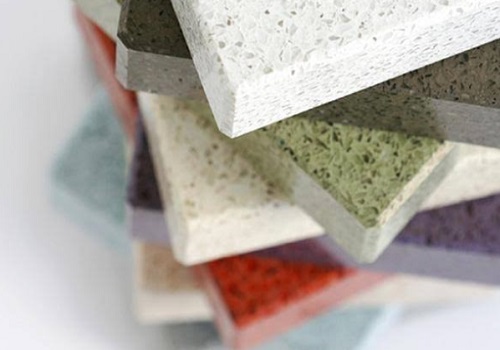
Engineered stone, often called composite stone, or quartz, is a material used mainly for kitchen worktops, and sometimes for flooring and other surfaces in the home. The production process involves combining powdered stone with resins, pigments, and other materials to create a solid, non-porous surface that is highly resistant to scratches, stains, and heat, so excellent for kitchen use. Some of the powdered stone can contain natural quartz crystals and these are the cause of the concerns.
No risk to consumers.
The risk is from breathing in the silica dust and this only occurs when the material is being cut and shaped at the fabricators.
Once your worktops are installed there is no further cutting or machining of the material and so there is no chance of any silica dust being produced. Engineered stone worktops will provide you with years of service and offer a very tough and practical surface presenting no danger to you as you work on them or clean them down.
The risk to fabricators and installers.
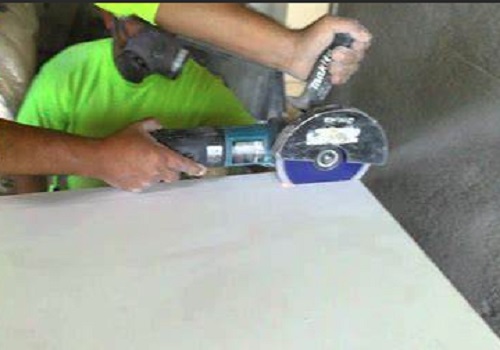
During the manufacturing process of some engineered stones silica dust can be released, presenting a danger to the workforce if the correct protective equipment is not being used.
Additionally there is potential a very small health risk during installation with the release of volatile organic compounds (VOCs). VOCs are chemicals that can be emitted from certain materials, including some types of adhesives and sealants used in the installation of engineered stone. These chemicals can cause eye and respiratory irritation, headaches, and other health problems if inhaled in large quantities over an extended period of time. Again, once installed, VOC emission is no longer a concern, so the risk of exposure over a sufficiently long time to sustain any harm is pretty well zero.
Mitigation.
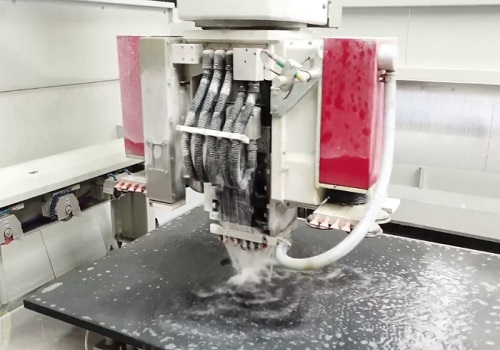
Mostly careful management of the manufacturing process and the use of protective clothing and breathing apparatus will minimise any risk to workers. Water cooled cutters should be used as they reduce the amount of dust and debris escaping into the atmosphere, but the correct protective dust mask is still required to ensure no silica dust is breathed in.
During installation the advise is to ensure the room is well ventilated, especially if any minor adjustments require cutting. For their protection the fitters should ensure they use the correct PPE and any dust and debris created during alterations and adjustments should be vacuumed up and safely disposed off. Once the engineered stone has been installed and cleaned there is no further risk of silica dust being present and any VOC's released by sealants and glues will clear and then, when the materials are fully cured, there will be no more emitted.
Conclusion.
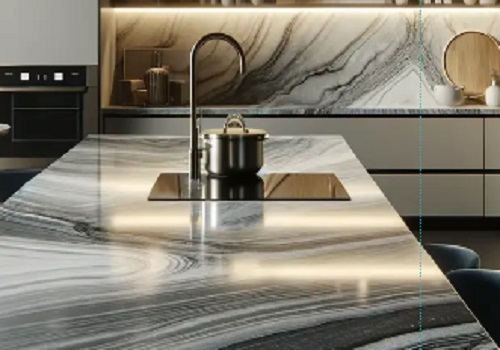
If you have an engineered stone worktop in your kitchen there is no need to be alarmed. Any health risk is during manufacturing of some types and there is really only a very low risk at installation. There is no risk from your worktop or other engineered stone surfaces in your home during use and cleaning going forward.
Engineered stone products still offer many advantages and will always be a good choice for your kitchen so don't be put off by rumours and exaggeration.
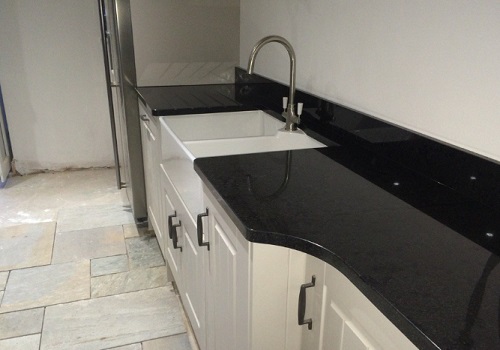
Further developments.
Not surprisingly there has ben a positive response from the solid surface industry. Although the present risks are contained within manufacturing facilities, companies engaged in fabricating engineered stone have taken steps to significantly reduce, and in some cases totally eliminate silica from their raw materials. Their claim is that a re-balance of the ratio of component parts is allowing all the benefits of the original products even though the silica content has been well reduced. there is, however, a warning to consumers that the price point is likely to rise a little, as the type and quality of glass used in the newer formulations needs to be of a high standard. Some newly emerging lower priced engineered stone products will not contain the same high quality glass and likely a higher percentage of resins which may have the effect of the product fading over time. Basically their point is that the slightly higher price of the established brand names is down to research and development of the lower silica compositions, and their efforts to absolutely maintain product quality.
Worktop Fabricators Federation
The WFF have a membership who are skilled and qualified in the fabrication of engineered stone and other solid surface materials. You can find further advice and reassurance on their website.


